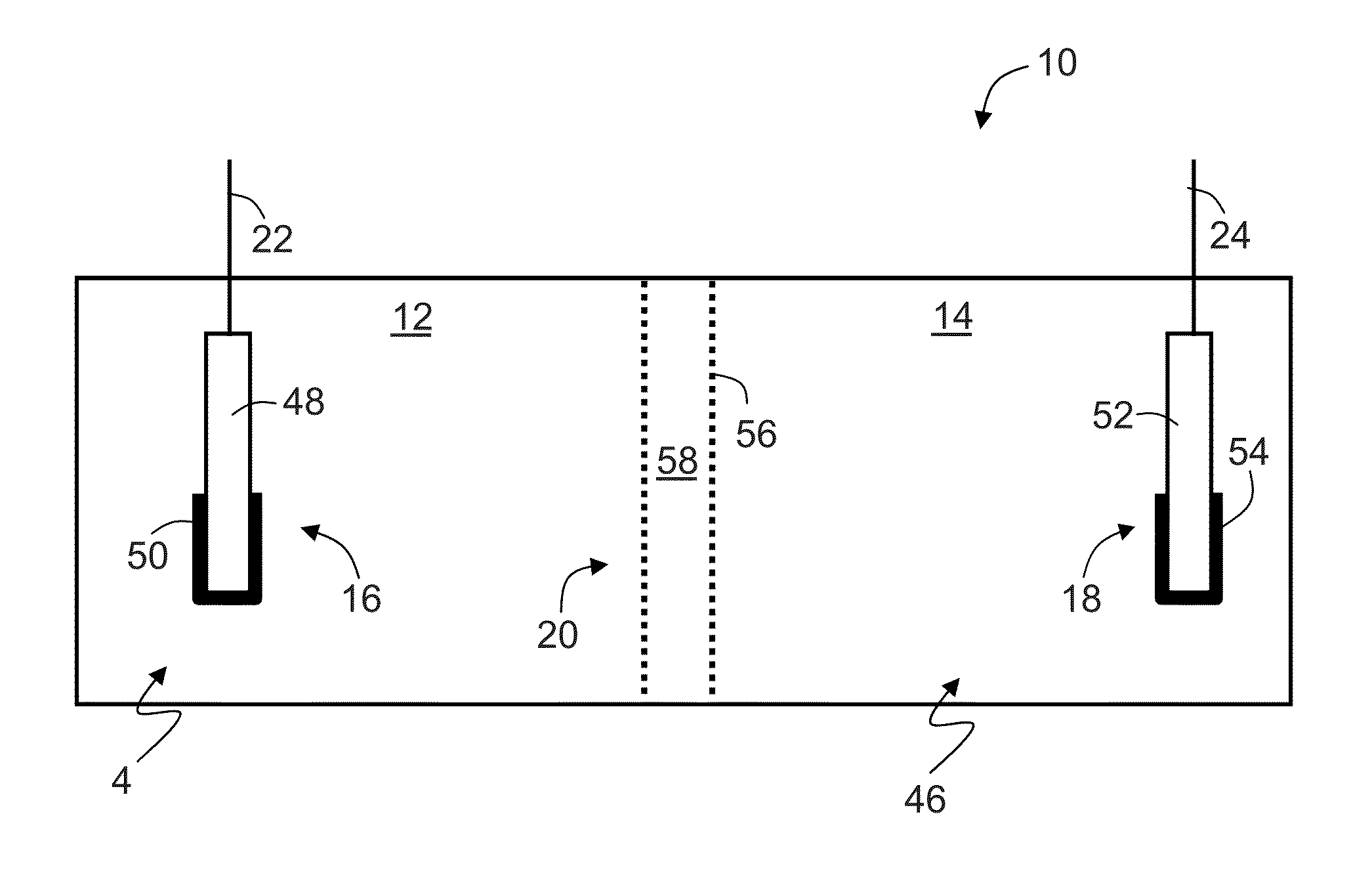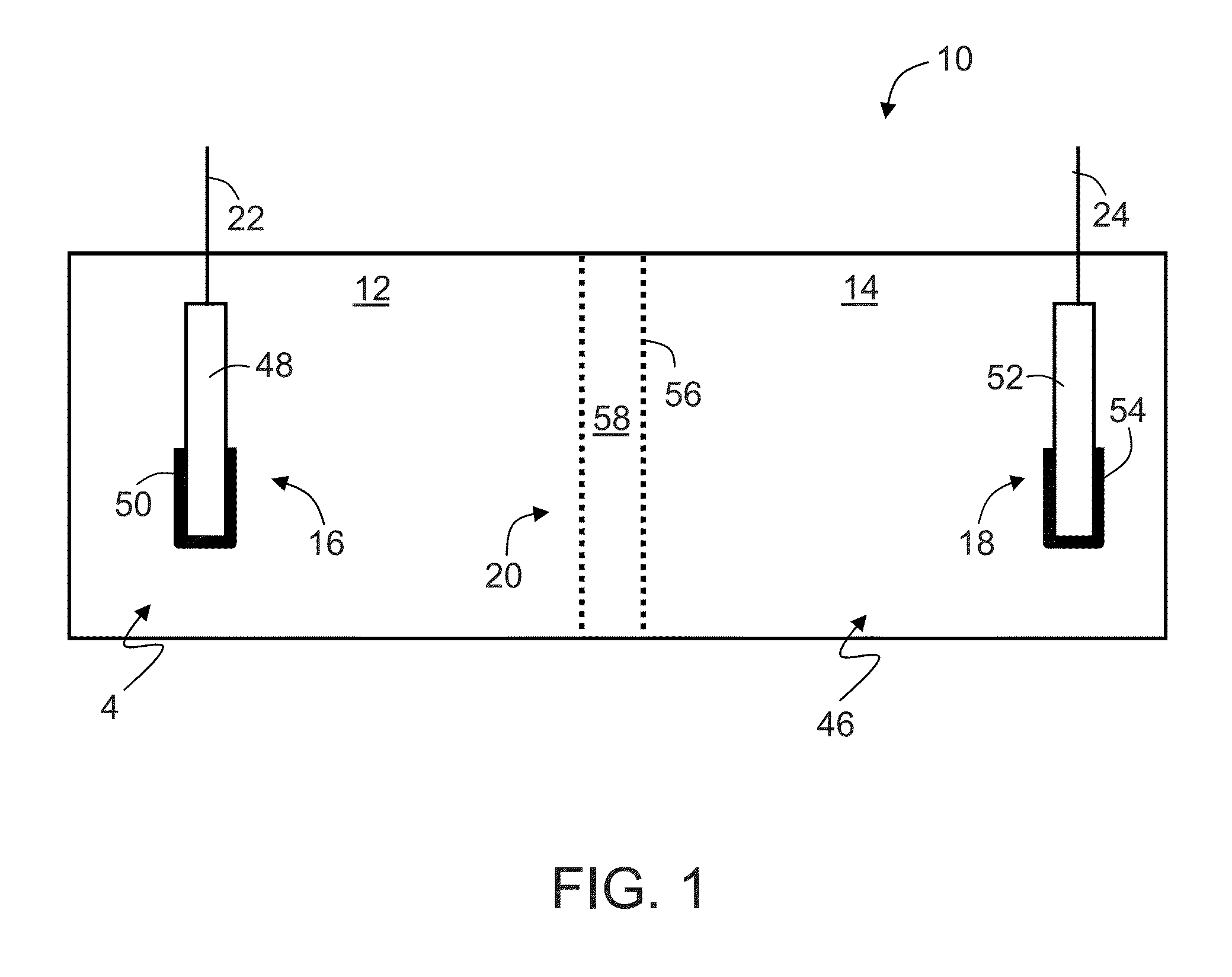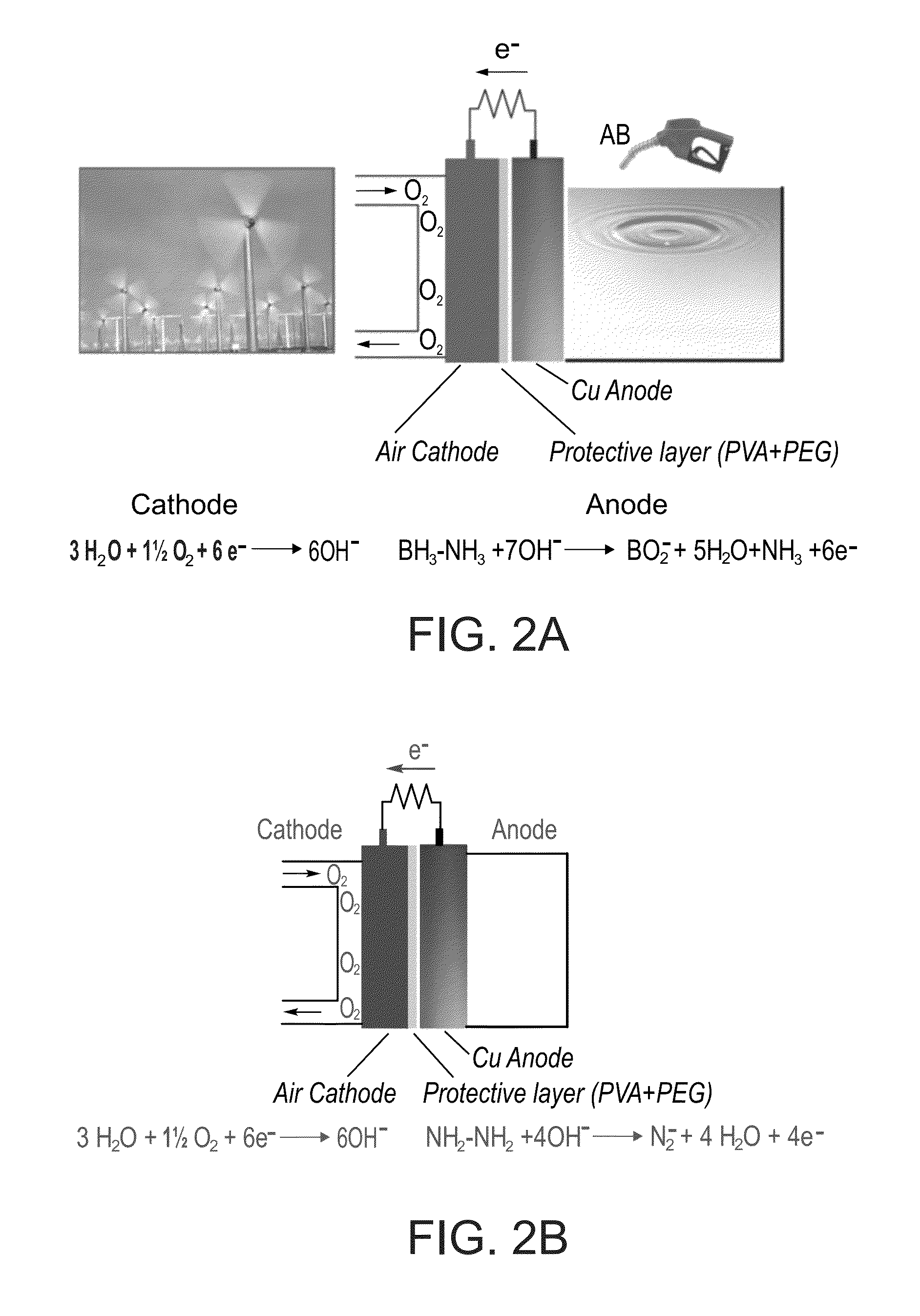Direct liquid fuel cell having ammonia borane, hydrazine, derivatives thereof or/and mixtures thereof as fuel
a liquid fuel cell and ammonia borane technology, applied in the field of energy conversion, can solve the problems of limiting the operation reducing the utility and desirability of the fuel cell, and modifying the electrod
- Summary
- Abstract
- Description
- Claims
- Application Information
AI Technical Summary
Benefits of technology
Problems solved by technology
Method used
Image
Examples
examples
[0440]Reference is now made to the following examples, which together with the above descriptions illustrate some embodiments of the invention in a non limiting fashion.
Material and Experimental Methods
[0441]Materials:
[0442]Polyethylene glycol (average MW 200 Da) and poly(vinyl alcohol-co-ethylene, ethylene content 27% mole) were purchased from Sigma-Aldrich.
[0443]All other chemical reagents were also purchased from Sigma-Aldrich in analytical grade, unless otherwise indicated.
[0444]Ultrapure water (electrical resistance of 18 MΩ) from EasyPure RF (Barnstead) source was used throughout all the experiments.
[0445]Cu-mesh electrode 99.5% (wire thickness; 150 μm, 12.5 mm wide and 1.5 mm thick) was purchased from Teknolabor. In half-cell experiments, the same electrode as folded 4 times, producing a surface area A of 1.25 cm2.
[0446]A commercial air cathode (MnO2 catalyst, 60 cm2) was purchased from Electric Fuel.
[0447]Another commercial air cathode (a cobalt porphyrin catalyst, 70 cm2) w...
example i
AB / Air Fuel Cell
[0455]An exemplary AB / air fuel cell system according to some embodiments of the invention, as illustrated in FIG. 2A, was assembled using a Cu-mesh electrode (Teknolabor, 60 cm2) as an anode and a commercial air cathode (MnO2 catalyst, 60 cm2, Electric fuel), coated by a hydroxide-exchange membrane, as follows.
[0456]The coated air cathode was prepared by depositing on the commercial air cathode 2.5 ml of a solution containing 5% w / v poly(vinyl alcohol-co-ethylene) and 5% w / v polyethylene glycol (average MW 200 Da) in a 1:1 n-propane and water mixture and subsequent drying at 120° C. for 1 hour.
[0457]FIGS. 3A-C present the results obtained for this exemplary AB / O2 fuel cell, being 6×10×2.5 cm in size, 60 cm2 geometrical area, and containing a coated commercial air cathode as described hereinabove and a Cu mesh anode as described hereinabove in an anode solution containing 50 ml of 2 M (3 grams) ammonia borane (AB) in 6 M KOH+4.2 grams solid KOH.
[0458]FIG. 3A is a grap...
example 2
Hz / Air Fuel Cell
[0467]An exemplary hydrazine (Hz) / air fuel cell system according to some embodiments of the invention, as illustrated in FIG. 2B, was assembled as described in Example 1.
[0468]FIGS. 4A-B present the results obtained for Hz / O2 fuel cell, (being 6×10×2.5 cm in size, 60 cm2 in geometrical area) containing a commercial air cathode as described hereinabove and a Cu mesh cathode as described hereinabove in an anode solution containing 25 ml 65% w / v Hz (16.25 grams) and 25 ml 6 M KOH+4.2 grams solid KOH.
[0469]FIG. 4A is a graph presenting the voltammetric properties of this cell (LSV), at a scan rate of 20 mV·s−1.
[0470]FIG. 4B is a graph presenting the complete discharge at 1 A.
[0471]The fuel cell is characterized by an OCP of 0.70 V.
[0472]The fuel cell power output corresponds to 0.37 W at 1 A.
[0473]The results of the full-discharge experiment at 1 A are shown in FIG. 4B.
[0474]The capacity corresponds to 11.6 Ah, the energy corresponds to 4.3 Wh.
[0475]Hydrazine efficiency ...
PUM
| Property | Measurement | Unit |
|---|---|---|
| specific energies | aaaaa | aaaaa |
| hydroxide-permeable | aaaaa | aaaaa |
| chemical energy | aaaaa | aaaaa |
Abstract
Description
Claims
Application Information
 Login to View More
Login to View More - R&D
- Intellectual Property
- Life Sciences
- Materials
- Tech Scout
- Unparalleled Data Quality
- Higher Quality Content
- 60% Fewer Hallucinations
Browse by: Latest US Patents, China's latest patents, Technical Efficacy Thesaurus, Application Domain, Technology Topic, Popular Technical Reports.
© 2025 PatSnap. All rights reserved.Legal|Privacy policy|Modern Slavery Act Transparency Statement|Sitemap|About US| Contact US: help@patsnap.com



